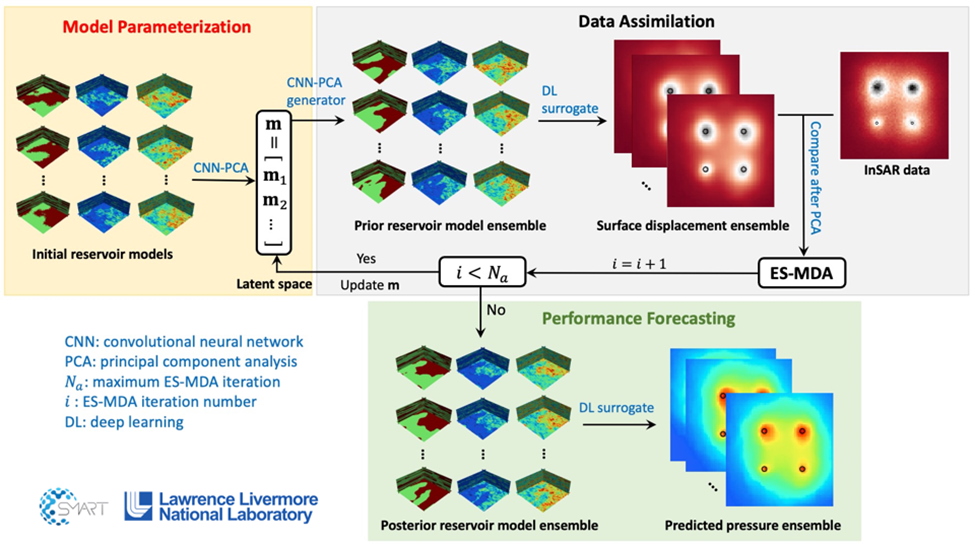SMART researchers proposed a 3D data assimilation workflow for reservoir-wide pressure forecasting in geologic carbon storage (GCS). To address the challenge of sparse pressure measurements from wells, Interferometric Synthetic-Aperture Radar (InSAR) data are used to infer reservoir pressure build up. The computational efficiency of the workflow is boosted by deep learning surrogate models. The workflow can complete data assimilation and forecasting in half an hour on a personal computer, achieving a speed increase of 1,500 times compared to a traditional approach. We demonstrated the workflow with a 3D reservoir model with rock properties following bimodal distributions. Key technical features of the workflow include:
- A two-step CNN-PCA approach for parameterizing the 3D bimodal fields.
- Two residual U-Net-based surrogate models for surface displacement and reservoir pressure predictions.
- Both the prior reservoir ensemble and the U-Net training data are constrained by well logs.
- Ensemble Smoother Multiple Data Assimilation (ES-MDA) framework is applied for inverse modeling with quantified uncertainties.
More details can be found in the preprint: https://arxiv.org/pdf/2201.08543.pdf
POCs for this work: Hewei Tang (tang39@llnl.gov) Pengcheng Fu (fu4@llnl.gov)

